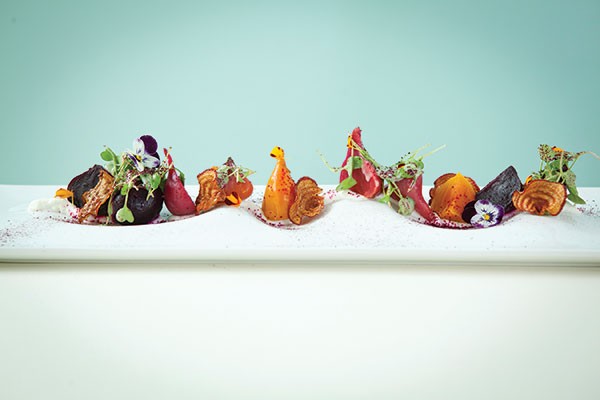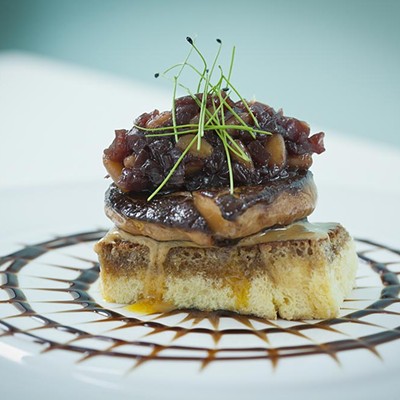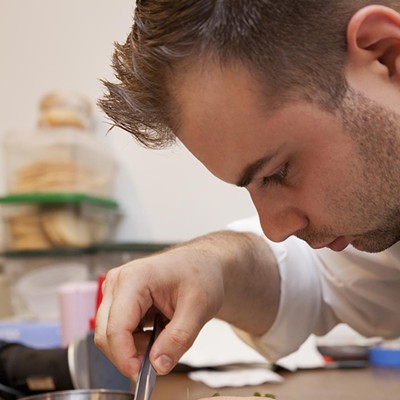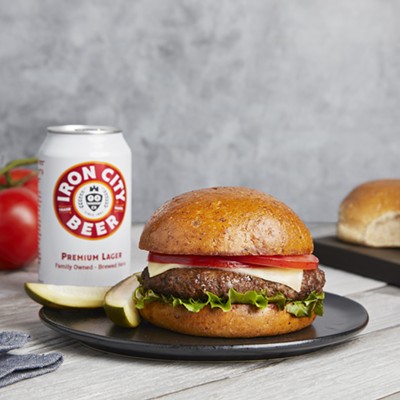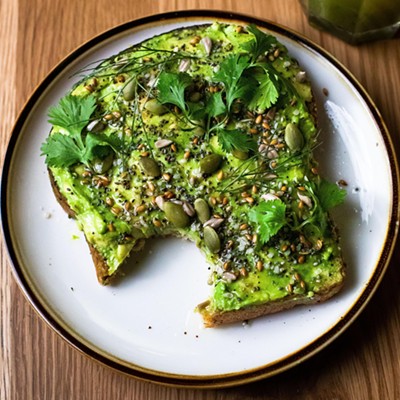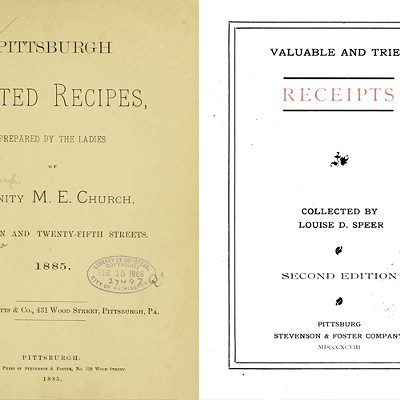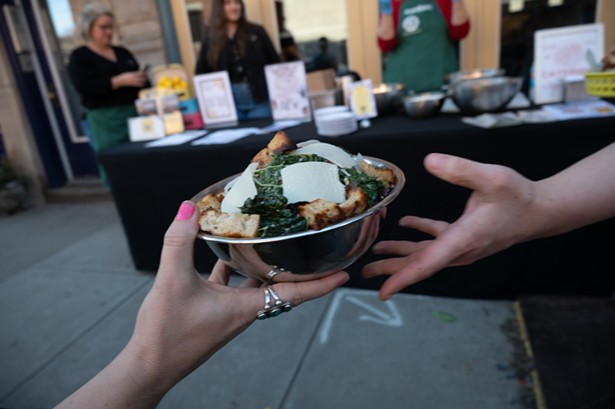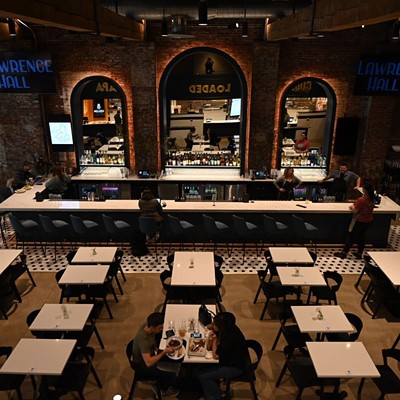How fast is East Liberty gentrifying? Just half a dozen years since the first notable restaurants clustered, hopefully, north of the intersection of Centre and Highland, they are already gone. Roaring revitalization is now reshaping the dining scene to serve the occupants of the many swank apartments currently under construction.
One of these new, upscale restaurants is The Twisted Frenchman, a sort of hybrid between traditional continental fine dining and hip, modern minimalism. The interior is a picture of restrained elegance, with a cool, aqua-and-taupe color scheme and bouquets of dried flowers wrapped in dinner napkins and suspended above the tables, a quirky touch that matches the Frenchman's approach to everything from food to service.
Service, actually, was excellent — warm, attentive and informative. But we were not very far into the menu when we were somewhat chastened by the note, "Please listen to servers [sic] instruction on dish presentation."
This, we came to find, is because servers at The Twisted Frenchman are involved in far more than carrying plated food between kitchen and table. The menu's marriage of classic French cooking with molecular gastronomy means that dishes frequently require assembly, finishing or elaborate explanation at the table.
Molecular gastronomy is the geekily technical, often showy use of new techniques like sous vide (cooking food wrapped in plastic in a warm water bath, then only finishing it over direct heat) and frequently borrows tricks of chemistry to explore the physical and flavor transformations in foods as they cook. Here, chef Andrew Garbarino brings molecular gastronomy to, if not Escoffier-style classical French cooking, at least recognizably traditional combinations of ingredients and flavors.
So duck was braised in Bordeaux, sturgeon served with caviar, and celery root combined with white bean in a soup. But there traditionalism ended. The soup bowl was served with streaks of creme fraiche and lobster foam in the bottom, half a fried soft-shell crab perched upright, and its edges were strewn with baby arugula and edible flowers. Into its well, the server poured the hot bean puree from a cruet at the table.
To say there was a lot going on here would be an understatement, but it all harmonized. The purée was velvety and subtly earthy, tempering the intensely briny lobster foam and crispy, musky crab and, in turn, enriched by the soured cream. The tiny but potent leaves and petals brightened both the dish's flavor and appearance.
A risotto "tasting" was a subtler move, but each of the three rice preparations was a success, and the ensemble worked well, too. Grounding the dish was a vibrantly green pea risotto with perfect, creamy texture and pure pea flavor; chef Garbarino nailed it with possibly the best risotto we've ever had. Atop this bed was a single arancini (dubbed "mac and cheese"), its core of molten cheese infused with the smokiness of paper-thin slices of bacon, its exterior crisp but not greasy, doubling down on the creaminess of the risotto. Balanced on top of this delectable sphere was a miniature rice-cake-like wafer of puffed garlic. Jason found it slightly bitter, but Angelique wanted to eat a bag of them, like potato chips.
Piedmontese steak refers to a breed, not a style; Garbarino served half of a very thick strip with an array that included truffle butter, shoestring blue potatoes and demiglace. Steaks, especially cuts like strip, tend to dominate their plates, rendering other components bit players or sidemen, but here the bold flavor and textures of everything else on the plate played as equals to the meat.
Lamb-wrapped lamb seemed a conundrum, but our server patiently explained: Ground lamb is combined with ground pork to make a sort of paste, which is wrapped around a chop and cooked sous vide until medium rare. The lamb was accompanied by "concentrated" carrots and a brie-stuffed onion, and demiglace was poured on at the table. While the lamb was almost impossibly tender, we were underwhelmed by the firm, whole carrots, and the lightly flavored, fluffy, whipped onion stuffing was disappointingly unlike the rich creaminess and pungent flavor we were expecting from brie.
A chocolate brownie for dessert was accompanied by wonderful orange sorbet, saturated with sweet-tart citrus flavor, and a spectacular presentation of chocolate mousse: a pitcher of liquid nitrogen, poured over the bowl at the table, caused the top layer to crater and freeze into, well, something that resembled an astronaut dessert. But the unfrozen mousse underneath was an earthly delight, as were most of the carefully constructed, expertly presented modernist morsels at The Twisted Frenchman.


